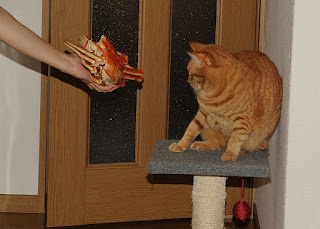Those living in Osaka, Japan or anywhere else need to know what the current mayor of Osaka is doing based upon his own preferences and desired images of Japanese culture. This is especially true as
his power grows and his local group becomes a national political party.
Hashimoto is cutting funding to Liberty Osaka, the only human rights museum in Japan. Why? Tessa Morris-Suzuki writes in her recent Japan Focus article (9/3/12):
The Osaka city government has until now provided a crucial part of the museum's funding, but the current city government, headed by mayor Hashimoto Tōru, has decided to halt this funding from next year, on the grounds that the museum displays are ‘limited to discrimination and human rights’ and fail to present children with an image of the future full of ‘hopes and dreams’ (Mainichi Shinbun 25 July 2012).
See the whole article: "Out With Human Rights, In With Government-Authored History: The Comfort Women and the Hashimoto Prescription for a ‘New Japan’"
Link:
http://japanfocus.org/-Tessa-Morris_Suzuki/3818
Hashimoto has cut funding for Korean schools in Osaka. Why? Among other reasons, according to a recent Japan Times article (9/2/12), he doesn't like Korean schools displaying portraits of Kim Jong Il:
In March 2010, then-Osaka Gov. Toru Hashimoto announced the prefecture would stop paying subsidies to Korean schools that refuse to meet four criteria, including the removal of portraits of the late North Korean leader Kim Jong Il.
The Osaka Prefectural Government stopped paying subsidies to one of the corporation's high schools in the 2010 academic year after determining it did not meet the provisions. It ended payments to most of the operator's elementary and junior high schools in the following school year because Kim's portrait adorned faculty rooms. For the current fiscal year, the prefecture didn't even allocate a budget for the subsidies. Meanwhile, the Osaka Municipal Government cut off subsidies to the schools when Hashimoto became mayor in 2011.
See the whole article: "Osaka faces Korean subsidy suits"
Link:
http://www.japantimes.co.jp/text/nn20120902a7.html
Hashimoto is cutting funding for Bunraku puppets (an art form originating in Osaka). Why? According to a recent Mainichi article (7/27/12), he didn't like the performance:
Osaka Mayor Toru Hashimoto, who recently declared he would freeze subsidies to an association for Bunraku, a centuries-old form of puppet theater, expressed his dissatisfaction with a Bunraku show he saw on July 26, describing the performance as "unsatisfactory."
"I understood that this is an art that should be preserved as a classic (art form), but the last scene was plain, and lacked something," Hashimoto told reporters after watching "Sonezaki Shinju" (The love suicides at Sonezaki), a classic play based on the work of renowned 17th-18th century dramatist Chikamatsu Monzaemon, at the National Bunraku Theatre in Osaka's Chuo Ward on the evening of July 26.
"The staging was unsatisfactory," the mayor added in his comment on the play, which has not been changed since it was reintroduced to the public in 1955. "Does it really have to follow the old script that precisely?"
See the whole article: "Osaka mayor Hashimoto calls classic Japanese play 'unsatisfactory'"
Link:
http://mainichi.jp/english/english/newsselect/news/20120727p2a00m0na006000c.html
Granted, Osaka Prefecture and Osaka City have terrible budget problems. But these cuts and others seem to be done by the whims and personal views of Hashimoto. These budget cuts, along with his
witch-hunt for city employees with tattoos and his
insistence of standing for the Japanese flag and national anthem provide insight into this man and the kind of changes he wants to do in the creation of his image/view of Japan.
Journalist Hiroshi Iwaisako provides more information about Hashimoto and perhaps his rationale for budget cuts and other actions in a recent article at
Nippon.com (7/24/12); his report/perspective is more serious/formal than
other descriptions of Hashimoto that have appeared in other sources.
See the article: "What to Make of Hashimoto Tōru?"
Link:
http://www.nippon.com/en/in-depth/a01103/
See also: "Hashimoto sets new national party, names it Nihon Ishin no Kai" by Eric Johnston (9/9/12)
Link:
http://www.japantimes.co.jp/text/nn20120909a1.html
As for tattoos, Hashimoto might benefit from reading this article: "Top Arizona court rules tattooing is protected speech" (9/7/12)
Link:
http://www.msnbc.msn.com/id/48948732/ns/us_news-crime_and_courts/#.UE1RGxhhNFQ
People need to know what Hashimoto is doing along with his so-called rationale. Is this what we want for the future of Japan?
Link to Liberty Osaka Human Rights Museum:
http://www.liberty.or.jp/topfile/human-top.htm


















































